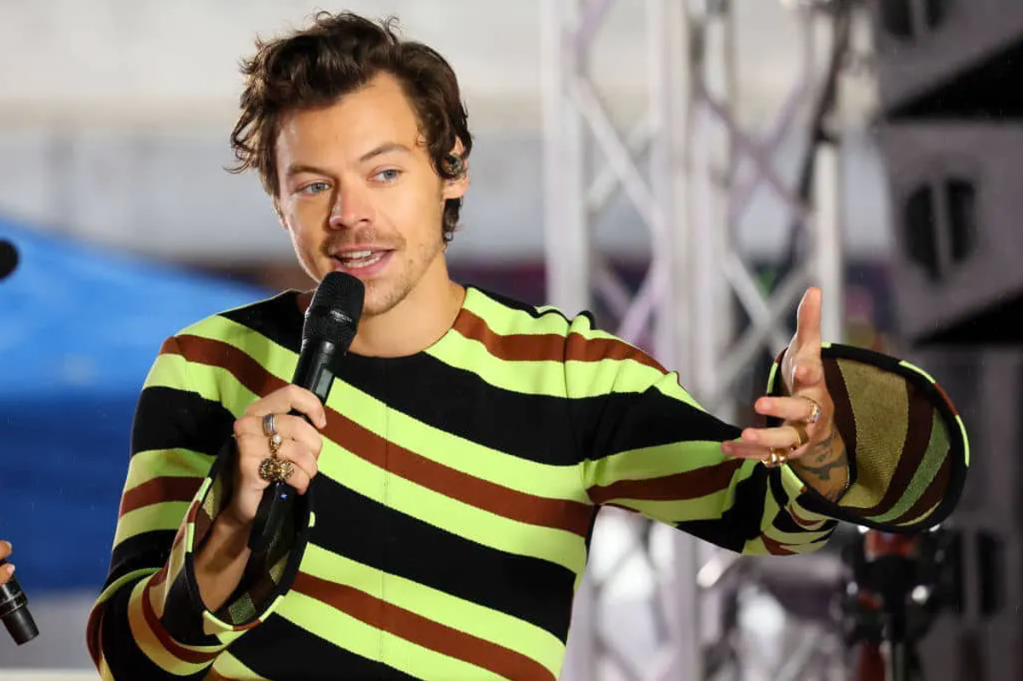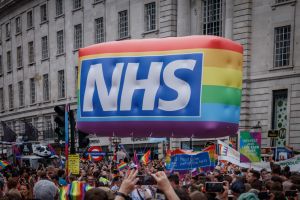Celebrities used to dread being outed as gay. Now they seem to dread being outed as straight. Consider Harry Styles. The poor fellow seems to live in constant fear of being exposed as a boring old heterosexual.
Mr. Styles, the current king of pop, dances around questions about his sexuality. It’s “outdated” to define your sexuality, he says. We shouldn’t have to “label everything,” he insists. Why should you have to go around clarifying “what boxes you’re checking,” he said to an interviewer.
All right, mate — they only asked about your sexuality.
There’s a palpable defensiveness in young Harry’s comments on sexuality. Only it’s the polar opposite of the defensiveness expressed by gay pop and film icons in the past, from Rock Hudson in the 1950s to the pre-out George Michael of the 1980s.
Where those guys ducked and dived queries about their sexuality because society was still pretty homophobic back then, and therefore honesty was not an option for many homosexuals, Styles seems to erm and ahh on the sexuality question because he cannot bring himself to say: “I’m straight.”
Look, I don’t know for sure if Styles is full hetero. None of us does. But the clues are there. He’s currently dating one of Hollywood’s great beauties — Olivia Wilde — and his partners all seem to have been women.
And yet when this was put to him by Rolling Stone this week, he got defensive again. “Sometimes people say, ‘You’ve only publicly been with women,’ and I don’t think I’ve publicly been with anyone,” he said.
You have, Harry. You’ve been publicly linked with women. It’s OK. There’s no shame in straightness.
If there were a straight version of a gaydar — a straightdar? — most people’s would go off if they encountered Styles. So why can’t he just say he’s heterosexual? Or at least that he’s mainly dating women right now?
It’s because something very odd is happening with sexuality among late millennials (like Harry) and the even younger Generation Z. Many of them seem absolutely desperate to avoid the tag of “heterosexual.”
They’d rather be anything but straight. Queer, genderqueer, genderfluid, pansexual, demisexual — these are the preferred identities of a new generation that thinks heterosexuality is for boring old farts.
Styles and his sexuality are back in the news this week. He’s being accused of “queerbaiting,” which is when someone adopts a “queer identity” despite not being gay. Well, if that is what Styles is doing, he’s not alone.
The number of young people identifying as LGBTQIA etc is soaring. A poll in the US found that more than 20 percent of Gen Z — those born between 1997 and 2003 — identify as something other than straight.
Get this: between 2017 and 2021, the proportion of American Gen Z-ers who identify as LGBTQ rose from 10.5 percent to 20.8 percent. Now, either Alex Jones was right all along and there’s something in the water turning people “queer,” or there’s some kind of social contagion taking place here.
Some will say that the reason more young people are identifying as something other than heterosexual is because it has become more socially acceptable to do so, and that’s a good thing.
There may be a little truth in this. But it cannot be the entire explanation. I just do not believe that 20 percent of American youths are non-straight. Rather, I think they’ve imbibed the new, social-media-fueled trend for being queer, genderqueer, genderfluid, pansexual or whatever — anything but straight.
I would also dispute that this fashion for “queerness” — where even mortified straights feel the need to adopt a queer persona — is good for gay rights.
After all, the new rage for identifying with some seemingly exotic sexuality sits fairly well with the rise of what we might call woke homophobia. Consider the number of gay boys and young lesbians who now find themselves on the transgender conveyor belt, being offered medical treatment to cure their “confusion.”
We live in a society that encourages people to play about with all sorts of queer identities while also medicalizing young people who would very likely grow up to be homosexual. An ostentatious, narcissistic culture of queer cosplay coexists with a hostile climate in which old-fashioned same-sex attraction is treated by some as a form of “sexual racism” — it’s bigotry, apparently, for women to love only women and not also trans women (i.e. men).
There is little healthy in any of this. Straights ashamed of being straight, homosexual youths wondering if they’re bigots for being attracted to people on the basis of sex rather than gender identity — what a mess.
So, Harry, it’s fine to be attracted to the opposite sex. Just as it’s fine for people to be attracted to the same sex. Straight, gay, bisexual — it’s all good. All the other stuff, though, all that alphabet soup of increasingly wacky sexual identities — I’m afraid it just looks like attention-seeking to me.
This article was originally published on The Spectator’s UK website.


















